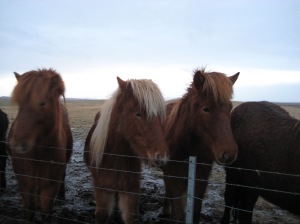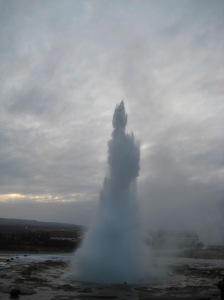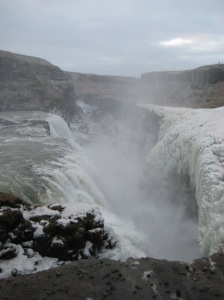It was a distinctly less exciting journey from Pamukkale to Selçuk, the town located just a few kilometres away from the hugely historic ruins of Ephesus. The journey took four and a half hours (again using the Pamukkale bus company, with the journey costing just 20TKL) and we drove along very average toll roads, took in Kuşadası, a very popular tourist town on the Aegean coast complete with huge tower blocks, lots of areas of housing that all looked the same and a few dolphin themed water parks. Needless to say that having gotten up at 4am to catch the bus, I was more than a little jaded once I arrived in Selçuk, and was ready to check into the hotel and relax for the rest of the afternoon.
I stayed at the Akay Hotel, which I got a taxi to from the local otogar (bus station) which cost 7.50TKL to go the short distance, but considering I had no idea which way to go when I arrived, it was money well spent. The hotel itself was nice, run by Ria who was very helpful and showed me to where I was to be staying. I was a little disappointed by my room, and had the feeling that I’d been given the smallest room as I was a single traveller and it was cramped, cold and dingy. It did however, look out on the pretty courtyard and pool area that was generally quiet while I stayed there. The best part about my accommodation was its location- tucked across the road from the Isa Bey mosque.
Having settled into my hotel room and read up a little on Selçuk, I was surprised to find out that it had plenty of history itself, and so I decided to go and investigate. My first stop was the Isa Bey mosque, which is apparently one of the oldest in the county, having first been opened in 1375. I only got to walk around the courtyard of this beautiful building as I’d forgotten to bring a scarf with which I could cover my head and shoulders with, but the beautiful geometric patterns on the marble walls and the towering minaret (now only half its original size due to the many earthquakes this region suffers) still made the visit well worth my while.
From there I wandered into the town and got my bearings a little. I visited the train station to see if I could book my onward ticket, and found the squares where the men sit and drink çay together whilst watching the world as it slowly continues around them, or playing backgammon or perhaps a heated game of dominoes. I then walked the short distance up to the Basilica of St John.
Saint John is believed to have visited Selçuk twice in his lifetime, and apparently wrote his gospel on a mountain overlooking the area, and is believed to have been buried there. A small chapel was built over the site several hundred years later, and over the years this monument got bigger, attracting pilgrims from all over Europe, and eventually being converted into a mosque, and then ransacked by Mongol armies. A huge earthquake was the final event which ended the basilica’s history as a place of worship, but over the last hundred years or so, archaeologists have slowly been going over the site and reconstructing the incredible buildings that used the stand there. The views of the surrounding area alone are a reason to come and visit these ruins, and it also offers a great vantage point on which you can see what’s left of the Temple of Artemis.
On further investigation into the Temple of Artemis, I found that there was only one column left of the entire building ( there used to be 127 columns), but astonishingly enough, the height of which proves that the temple was in fact larger than the Parthenon in Athens, and is one of the seven wonders of the ancient world. It’s difficult to imagine the scale of this building, when there’s just one column left in a vast empty field with a stork’s nest perched on top, but it’s a nice place to try to contemplate it.
I had the misfortune of eating in Hotel Akay’s rooftop restaurant that evening, and was sorely disappointed with the service and with the cold, congealed food, and so while I can’t recommend anywhere to eat, I can definitely recommend where not to!
I left early the next morning for Ephesus, the world-famous ruins 3km outside of Selçuk. The ruins open at 8am, and I recommend getting there as close to this as possible to avoid the heat of the day and the huge crowds of tourists bussed in from resorts and cruise ships docked nearby. That being said, the audio guides that are rented out at the entrances are pretty awful, and tour guides can work out expensive if you’re travelling alone, so it is good to occasionlly to stand close to some of the bigger tour groups and find out some interesting facts! You have to get a taxi to the ruins if you’re not travelling as a part of a tour group, and this will cost you 15TKL from the otogar. Your taxi driver may offer to meet you a few hours later and take you back for the same price, but there were plenty of taxis waiting once I left a few hours later. It’s a good idea to ask to get dropped off at the Magnesia Gate, and then you can walk down the gently sloping hill to the Lower gate where the taxis, souvenir stands and food vendors are gathered.
Ephesus is said to have the best preserved ancient city anywhere in the Mediterranean, and though I’m sure this is hotly contested by many other sites, I can see why it’s been said. The first settlers here are believed to be the Leleggians in about the 12th century BC, and the population grew and mixed with new settlers over many centuries to become the city of 250,000 people who lived here in its heyday. As with the civilisations of much of Turkey, the people who settled here are from all over the world, and many different empires asserted their powers over the city. The Ionians came after the Leleggians, then followed Kind Croesus of Lydia and then the Persians. Ephesus briefly joined the confederacy of Athens, but then fell back under Persian control, and then Alexander the Great ruled over the city until his death, when Lysimachus took control and built the Ephesus that we can recognise today. All of that was before the year 0! The city became a thriving port attracting immigrants and pilgrims from all over Europe, but sadly it’s port eventually silted up in around the 6th century AD, despite many efforts to stop it and it fell rapidly into decline. It’s been excavated for the past 150 years, and the archaeologists have only uncovered about 18% of the ruins.
There are so many wonderful ruins, buildings, sculptures, that I couldn’t possibly mention them all, but a few in particular stand out in my mind. There were many, many fountains in the city, which must have been an amazing sight, but surely none could have been more amazing than the Trajan fountain. This huge fountain once incorporated a statue of Trajan (though about three times his real size!) and the water would flow underneath the statue and onto the street, cleaning it. The statue is balancing one of his feet on a sphere which represents the earth, which the Romans already knew was round. 
Ephesus is probably most famous for its Library of Celsus, an incredible building that was built in between other buildings, and to maintain the image of grandeur, they built the building with a distorted perspective.
If you look closely at the picture, you can see that the top row of windows and columns are about a third smaller than the bottom row. This is to make the building seem much larger than it really is, and the central columns are taller and wider than those at the edges for the same reasons. It used to hold over 12,000 scrolls in niches around the walls, and the building had been specially designed with two sets of thick stone walls with a metre cavity between each one to control the heat and humidity of the building.
The last mention has got to go to the last street in the city, Harbour Street, which has columns running each side of the road, down to where the water would have lapped at the edge of the city. Now, there is a column taller than the rest to mark where the water would have been, which is now nowhere in sight.
I left Selçuk on the train later that afternoon to go to İzmir and then on to Istanbul. The train from Selçuk to İzmir airport only cost 4TKL and took less than an hour. The trains are not the fastest way to travel, but they are the comfiest and give a great view! Due to the peculiarities of Turkish train travel, I wasn’t able to book my train ticket from İzmir to Istanbul in advance, because I couldn’t purchase the ticket for that leg of the trip in Selçuk. I didn’t want to run the risk of an 8 hour train journey without a seat, so I decided to fly from İzmir to Istanbul with Pegasus Air, which only cost 79TKL. After less than an hours flight I had touched down in Istanbul’s Atatürk airport…




















